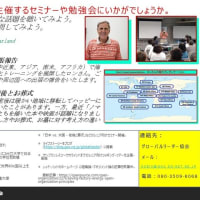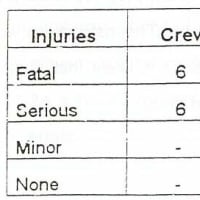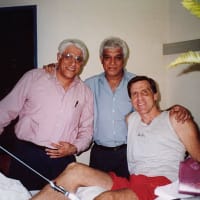Ronさんと私の奇妙なつながりの一つは、以前お話ししましたカリフォルニア州サンノゼ。
ロンさんはサンノゼ州立大学で学び、私はIBMサンノゼ研究所で仕事。
もう一つのつながりはこのいすゞ自動車。
IBM藤沢工場・研究所があった桐原工業団地にいすゞ自動車とその関連会社があり、
また、同じマンションにいすゞ117クーペをデザインした社員もおり、当時の状況はよく耳にしました。
117クーペは、いすゞの個性的なデザインの乗用車。
今でも中古市場では人気のようです。ピアッツアの登場により1981年に生産終了。
さて、翌1982年、Ronさんに凄いことが起きます。
In those days, it was extremely rare for a foreign person to work full-time in a large Japanese company. Because of the language, corporate culture and business style, there seemed to be little value. In my case, I was one of a growing number of people taking this career path. It was so rare that along with four other people, I was interview for an article in FORTUNE MAGAZINE. It was in the July 12, 1982 issue. I am still in close contact with one of those people today.

FORTUNE MAGAZINE interview
確かに当時、日本企業で働く外国人は少なかったですね。
IBMのような外資系企業でも私の知る限りではおりませんでした。
今ほど、海外からの出張者もいなかったと思います。
さて、当時のいすゞ自動車の経営状態は?
Even in those days, Isuzu Motors was in financial difficulties and had a debt to equity ratio of 85% to 15%. Also, its working capital (current assets to current liabilities) was mostly in the red. Simply, they lived off of bank borrowing. As there were a lot of land and other long-term assets that were heavily undervalued on the books, the banks were always willing to continue to lend to Isuzu.
Most of the shareholders were institutional investors, like GM. Their main concern was related to working with Isuzu more than Isuzu’s profit making. The banks wanted to lend. The trading companies wanted to process overseas sales and lend short-term. GM wanted cheap and good vehicles, which they could not produce themselves. The financial health of Isuzu Motors was a minor concern to almost of the major shareholders. When the company did lose a great deal of money during a business term or because of a product failed, no one at the top management level would be held responsible. There was always a reason other than bad management decisions. That lack of attention and accountability is one of several reasons the company continued to deteriorate during my 21 years in the company.
From the job interview and throughout my career in Isuzu Motors, I had always been able to get agreement on proposals if I said I could do it cheaper than the way it is currently done. There was always a cost cutting program in place, and that got attention.
During the job interview, I said I would bring all language training programs in-house. I would hire teachers directly and set up an in-house testing system. That alone saved millions of Japanese Yen per year. No one was interested in improvements, only how to do the same thing cheaper.
ロンさんはサンノゼ州立大学で学び、私はIBMサンノゼ研究所で仕事。
もう一つのつながりはこのいすゞ自動車。
IBM藤沢工場・研究所があった桐原工業団地にいすゞ自動車とその関連会社があり、
また、同じマンションにいすゞ117クーペをデザインした社員もおり、当時の状況はよく耳にしました。
117クーペは、いすゞの個性的なデザインの乗用車。
今でも中古市場では人気のようです。ピアッツアの登場により1981年に生産終了。
さて、翌1982年、Ronさんに凄いことが起きます。
In those days, it was extremely rare for a foreign person to work full-time in a large Japanese company. Because of the language, corporate culture and business style, there seemed to be little value. In my case, I was one of a growing number of people taking this career path. It was so rare that along with four other people, I was interview for an article in FORTUNE MAGAZINE. It was in the July 12, 1982 issue. I am still in close contact with one of those people today.

FORTUNE MAGAZINE interview
確かに当時、日本企業で働く外国人は少なかったですね。
IBMのような外資系企業でも私の知る限りではおりませんでした。
今ほど、海外からの出張者もいなかったと思います。
さて、当時のいすゞ自動車の経営状態は?
Even in those days, Isuzu Motors was in financial difficulties and had a debt to equity ratio of 85% to 15%. Also, its working capital (current assets to current liabilities) was mostly in the red. Simply, they lived off of bank borrowing. As there were a lot of land and other long-term assets that were heavily undervalued on the books, the banks were always willing to continue to lend to Isuzu.
Most of the shareholders were institutional investors, like GM. Their main concern was related to working with Isuzu more than Isuzu’s profit making. The banks wanted to lend. The trading companies wanted to process overseas sales and lend short-term. GM wanted cheap and good vehicles, which they could not produce themselves. The financial health of Isuzu Motors was a minor concern to almost of the major shareholders. When the company did lose a great deal of money during a business term or because of a product failed, no one at the top management level would be held responsible. There was always a reason other than bad management decisions. That lack of attention and accountability is one of several reasons the company continued to deteriorate during my 21 years in the company.
From the job interview and throughout my career in Isuzu Motors, I had always been able to get agreement on proposals if I said I could do it cheaper than the way it is currently done. There was always a cost cutting program in place, and that got attention.
During the job interview, I said I would bring all language training programs in-house. I would hire teachers directly and set up an in-house testing system. That alone saved millions of Japanese Yen per year. No one was interested in improvements, only how to do the same thing cheaper.




























※コメント投稿者のブログIDはブログ作成者のみに通知されます